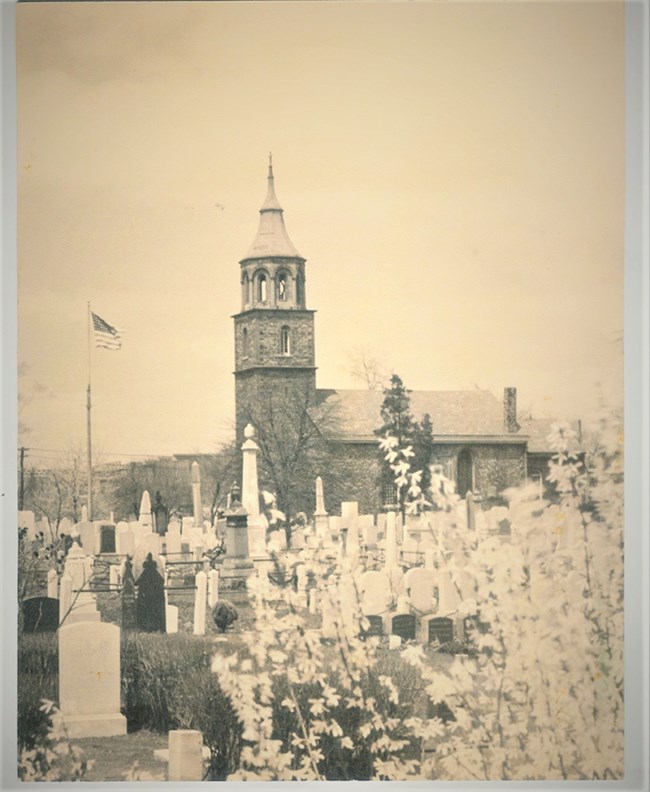Last updated: January 28, 2022
Article
Preserving the historic cemetery at St. Paul's

NPS
Perserving the historic cemetery
at St. Paul's
In their original form, the gravestones at St. Paul's Church National Historic Site, spanning three centuries, are a great source of historic value and pride. They are among the defining features of the cultural landscape that makes up the six-acre national historic site. Over the years, a wide variety of conservation treatments have been executed to maintain the cemetery and preserve the monuments, many of which are visible today.
One of the most striking preservation measures for visitors are the silver gray caps which rest atop some of the gravestones, especially the sandstone markers. Made of lead, these caps were carefully fitted over the skyward side of the markers to prevent rain and snow from entering open fissures. Water entering through these fissures will freeze in the winter, leading to fissure expansion and breaks in the layers of sedimentary stones. Additional preservation of the sandstone markers has included the injection of mortarbased grouts to fill fissures and voids, and capping broken, skyward facing edges with cementitious patching compounds to retard water infiltration.
Many unstable gravestones (“rockers”) have been repaired with pins. In earlier preservation measures, monuments composed of two or more pieces (often called “dieand-base” gravestones) were set together with iron pins, fit into holes drilled into both pieces at the meeting face. However, it has been discovered that iron pins rust and can break or cause the stone to crack or fall over. More recently, rusted iron pins were removed from gravestones and replaced with stainless steel pins; fallen gravestones were set upright. Some of this work has been impressive, employing a rig to hoist pieces up and move them into their appropriate positions.
Additionally, there has been selective cleaning of marble gravestones, where the build-up of soot (local pollution) and biological growth (algae and lichen) lead to an unsightly appearance and partially obscured inscriptions. Cleaning solutions vary, depending on the nature of the materials being removed.
All of the conservation work carried out over the last decade has been executed by National Park Service conservators and other trained conservators. Numerous conservation interns and supervised volunteers have also received training in the Saint Paul’s Church National Historic Site cemetery.
